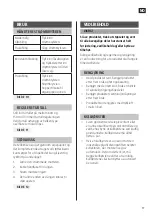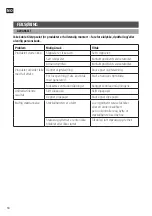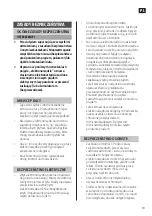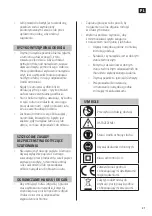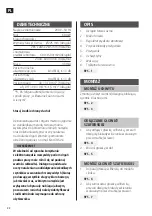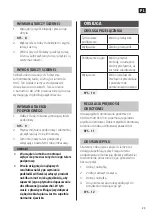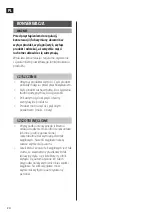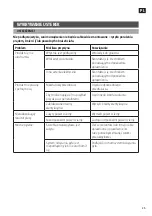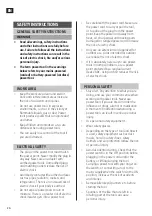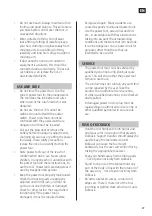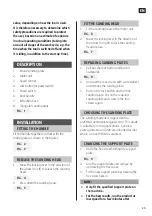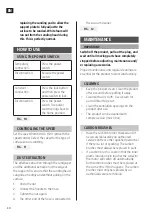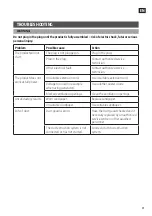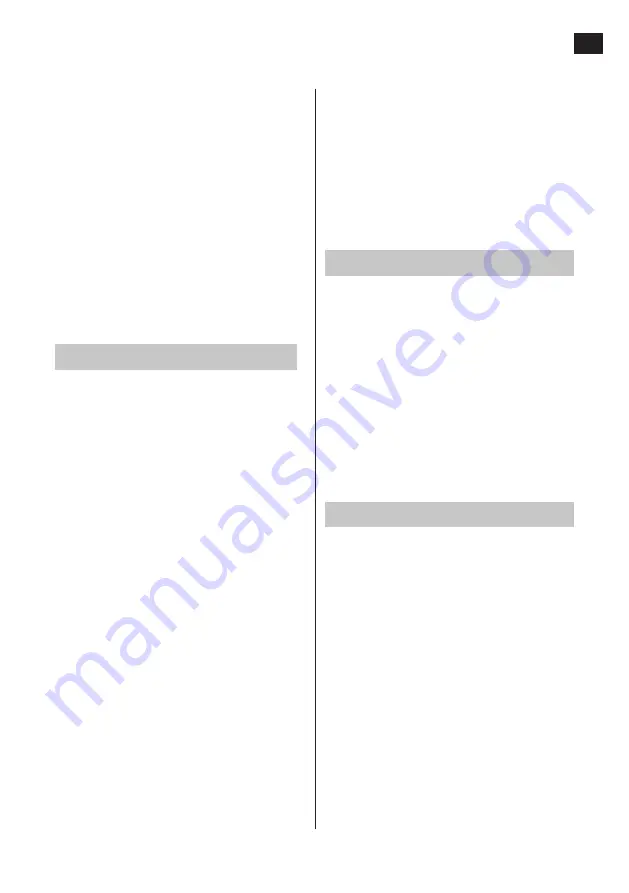
EN
27
• Do not overreach. Always maintain a firm
footing and good balance. This will ensure
you have better control over the tool in
unexpected situations.
• Wear suitable clothing. Do not wear
loose-fitting clothing or jewellery. Keep
your hair, clothing and gloves away from
moving parts. Loose-fitting clothing,
jewellery and long hair can get caught in
moving parts.
• If dust extraction and dust collection
equipment is available, this should be
connected and used correctly. The use of
such devices can reduce the risk of
dust-related problems.
USE AND CARE
• Do not force the power tool. Use the
correct power tool for the planned work.
The tool does the job better and safer
when used at the rate for which it was
designed.
• Do not use the tool if it cannot be
switched on and off with the power
switch. Power tools that cannot be
controlled with the power switch are
dangerous and must be repaired.
• Pull out the plug and/or remove the
battery before making any adjustments,
changing accessories or putting the power
tool away. These safety precautions
reduce the risk of accidently starting the
power tool.
• Store power tools out of the reach of
children when not in use. Never allow
children, or anyone who is unfamiliar with
the power tool and these instructions, to
use the tool. Power tools are dangerous if
used by inexperienced persons.
• Keep the power tool properly maintained.
Check that moving parts are properly
adjusted and do not jam, and that no
parts are incorrectly fitted or damaged.
Check for other factors that could affect
functionality. If the power tool is
damaged, it must be repaired before
being used again. Many accidents are
caused by poorly maintained power tools.
• Use the power tool, accessories and bits
etc., in accordance with these instructions,
taking into account the actual working
conditions and the work that is to be done.
It can be dangerous to use power tools for
purposes other than those they are
intended to be used for.
SERVICE
• The power tool must only be serviced by
qualified personnel using identical spare
parts. This will ensure that the power tool
remains safe to use.
• The product does not contain any parts that
can be repaired by the user. Take the
product to an authorised service centre,
or other qualified personnel, to be checked
and repaired.
• A damaged power cord or plug must be
replaced by an authorised service centre or
other qualified personnel to ensure safe
use.
RISK OF KICKBACK
• Hold the tool firmly with both hands and
hold your arms in a position that prevents
kickback. Support handles should always be
used to keep the tool under control.
Kickback can cause the tool to jerk
backwards, but the user can control this by
taking the appropriate measures.
• Keep your hands away from rotating parts
– risk of personal injury from kickback.
• Stand to one side of the tool without any
part of the body in line with the rotation of
the accessory – risk of personal injury from
kickback.
• Be extra careful on curves, corners and
edges etc. There is more risk of the tool
jamming or getting stuck, which can cause
kickback.





